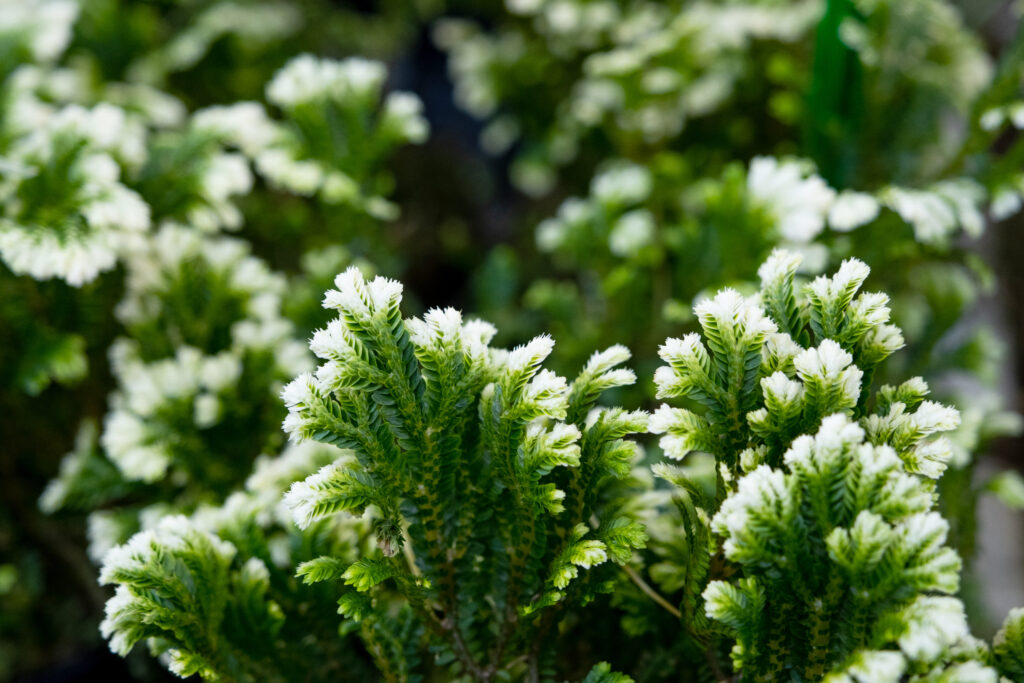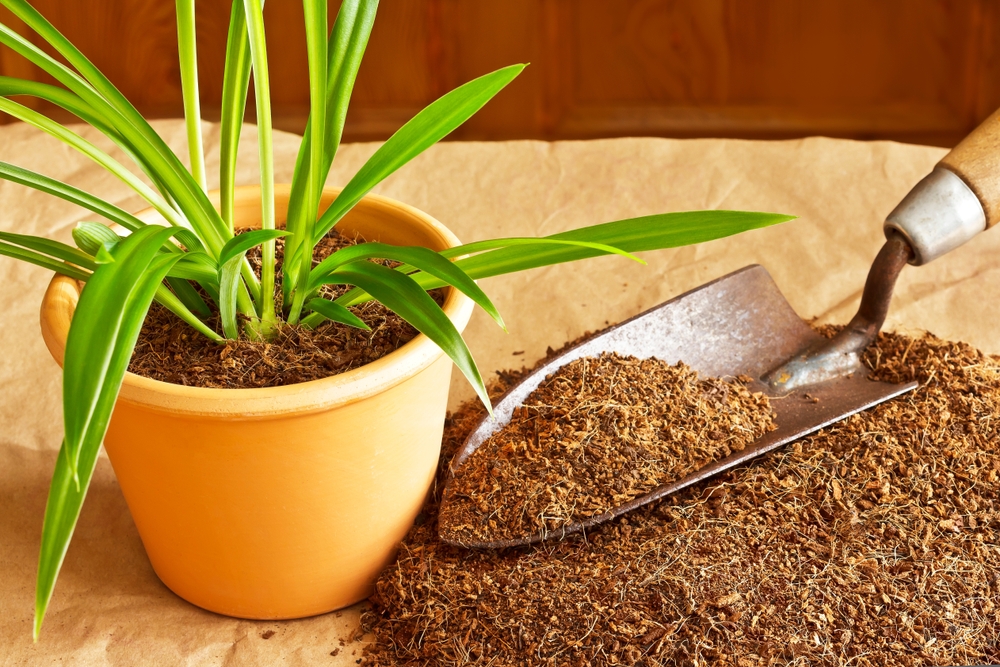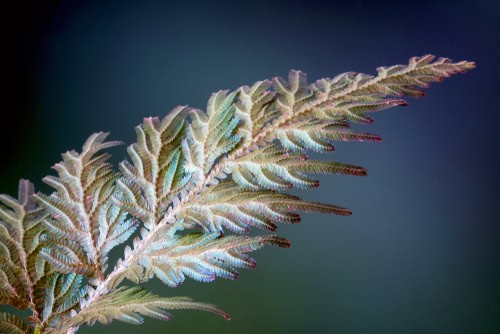Rainbow moss is a beautiful and unique plant that is known for its vibrant colors and ability to thrive in a variety of environments.
However, one common issue that many people experience with rainbow moss is yellowing. This can be a frustrating problem for plant owners, as it can be difficult to determine the cause and find a solution.
Understanding rainbow moss is key to properly caring for it and preventing yellowing. This type of moss is typically found in tropical regions and requires high humidity and moist soil to thrive.
When exposed to dry conditions or if the soil becomes too dry, the plant can begin to yellow and even die. It is important to recognize the signs of yellowing and take action to address the issue before it becomes too severe.
Causes of yellowing in rainbow moss can vary and may include improper care, seasonal changes, or even the presence of other living things. Proper care for rainbow moss is essential to prevent yellowing and maintain the plant’s health.
This may include providing adequate moisture, using the right soil mix, and avoiding exposure to direct sunlight. By taking these measures and staying vigilant for signs of yellowing, plant owners can help ensure the health and beauty of their rainbow moss.
Key Takeaways on Rainbow Moss Turning Yellow
- Proper care and attention are essential to prevent yellowing in rainbow moss.
- Causes of yellowing can vary and may include improper care, seasonal changes, and the presence of other living things.
- By understanding the unique needs of rainbow moss and taking proactive measures, plant owners can help ensure the health and vibrancy of their plants.
Also don’t miss:
- Queen Palm Turning Yellow
- Why Is My Potted Sago Palm Turning Yellow?
- Why Is My Ponytail Palm Turning Yellow?
Understanding Rainbow Moss

Rainbow moss, also known as Selaginella uncinata, is a unique plant that is neither a moss nor a fern. It gets its name from the beautiful bluish-green metallic shades of its leaves, as brilliantly iridescent as a peacock’s feathers. Rainbow moss is a slow-growing, low plant that is commonly used in terrariums where the air and soil are constantly damp.
Rainbow moss plants are sensitive to their environment and require specific care to thrive. They are known to turn yellow when they are not getting the right amount of water or light. Overwatering can lead to root rot, while underwatering can cause the plant to dry out and turn yellow.
To care for rainbow moss, it is recommended to use a high-water retention potting mix with 50% coco coir or soil, 20% perlite or pumice, and 20% worm castings.
Orchid bark can also be added to increase drainage. Rainbow moss plants hate drying out, so good moisture-retaining soil is essential. It is important to keep the soil damp, but not wet, at all times.
Rainbow moss prefers bright, indirect light and should be kept away from direct sunlight. The ideal temperature range for rainbow moss is between 60-80°F (15-27°C). If the temperature drops below 50°F (10°C), the plant may start to turn yellow.
Rainbow Moss Turning Yellow – 3 Common Problems
Rainbow moss is a beautiful and unique addition to any indoor garden. However, yellowing can occur, which is a sign that something is wrong. In this section, we will explore the most common causes of yellowing in rainbow moss.
Overwatering
Overwatering is the most common cause of yellowing in rainbow moss. When the moss is overwatered, it can’t absorb all the water, which leads to root rot. Root rot can cause the moss to turn yellow and eventually die. To prevent overwatering, make sure the pot has proper drainage and only water the moss when the soil is dry to the touch.
Direct Sunlight
Rainbow moss prefers indirect sunlight. Direct sunlight can cause the moss to dry out and turn yellow. If the moss is placed in a window that gets direct sunlight, move it to a location that receives indirect sunlight.
Temperature Changes

Rainbow moss prefers a consistent temperature. If the temperature changes too much, it can cause the moss to turn yellow. Keep the moss away from air conditioning or heating vents and make sure the room temperature is consistent.
Proper Care for Rainbow Moss
Rainbow moss is a beautiful and unique plant that requires proper care to maintain its vibrant colors and prevent yellowing. Here are some tips for taking care of your rainbow moss:
Watering Needs
Rainbow moss requires consistently moist soil, so it’s important to water it regularly. During the summer months, when the weather is hot and dry, you may need to water your plant more frequently.
If you notice that your rainbow moss is turning yellow, it may be a sign that the soil is too dry. In this case, you should water your plant immediately to prevent further damage.
Light Requirements
Rainbow moss thrives in shady areas, making it an ideal plant for woodland gardens or indoor spaces. Direct sunlight can be harmful to the plant, so it’s important to keep it in a shaded area. If you’re growing your rainbow moss indoors, you should place it near a window that receives indirect sunlight.
Ideal Temperature and Humidity

Rainbow moss prefers cool temperatures and high humidity. The ideal temperature range for the plant is between 60°F and 75°F. If the temperature exceeds this range, the plant may become stressed and turn yellow.
To maintain the proper humidity level, you can mist your plant regularly or use a humidifier. It’s also important to keep the plant away from drafts or areas with low humidity.
In terms of soil requirements, rainbow moss prefers humus or organic-matter-enriched soil. You should also ensure that there is at least 18 inches of space between the plant and other plants to allow for proper growth and spreading.
Seasonal Changes and Moss Health
Spring and Summer Care
During the spring and summer months, rainbow moss requires regular watering to maintain good health. This is because during these months, the sun is more intense, and temperatures are higher, causing the soil to dry out faster.
It is recommended to water the moss once a day, preferably in the morning or evening when the sun is not too hot. Make sure to use water that is free from chlorine, as chlorine can harm the moss. If your tap water contains chlorine, you can let it sit for a few hours or use distilled water instead.
In addition to regular watering, it is also important to provide adequate shade for the moss during the hottest parts of the day. This can be achieved by placing the moss in a location that receives partial shade or by providing a shade cloth or umbrella.
Fall and Winter Maintenance
As temperatures begin to drop in the fall and winter months, it is important to adjust the care of the rainbow moss accordingly. During these months, the moss requires less water as the soil takes longer to dry out. It is recommended to water the moss once every two to three days, depending on the temperature and humidity levels.
In addition to adjusting the watering schedule, it is also important to protect the moss from frost and freezing temperatures. This can be achieved by covering the moss with a frost cloth or moving it to a location that is protected from the elements.
Rainbow Moss in Different Environments

Rainbow Moss is a versatile plant that can thrive in different environments. However, the care requirements may vary depending on the environment it is grown in. In this section, we will discuss how Rainbow Moss behaves in garden and terrarium environments.
Garden Moss
Rainbow Moss can be grown in a garden environment as long as the soil is well-draining and moist. It prefers a shady area, away from direct sunlight. The ideal pH level for Rainbow Moss is between 5 and 7.3, which means acidic/neutral soil. If the soil is too alkaline, the moss may turn yellow.
Garden Rainbow Moss needs to be watered regularly to maintain its moisture levels. A layer of mulch can help retain moisture and keep the soil cool. It is essential to keep the moss compact by trimming it regularly.
Terrarium Moss
Rainbow Moss is also a popular choice for terrariums. It adds a vibrant touch of color to any miniature garden. Terrarium Rainbow Moss needs a well-draining substrate to prevent waterlogging.
A high-water retention potting mix with 50% coco coir or soil, 20% perlite or pumice, and 20% worm castings is ideal for Rainbow Moss.
Terrarium Rainbow Moss requires high humidity levels to thrive. Misting the moss regularly can help maintain the humidity levels. It is also recommended to use a pebble tray or a humidifier to keep the humidity levels high. The terrarium should be placed in a shaded area, away from direct sunlight.
Additional Tips and Measures
There are several additional tips and measures that can help prevent rainbow moss from turning yellow. Here are some of them:
1. Misting
Rainbow moss needs a humid environment to thrive. Misting the plant regularly can help maintain the humidity level. However, it is important not to over-mist the plant as this can lead to fungal growth. A good rule of thumb is to mist the plant once or twice a day, depending on the humidity level of the room.
2. Drainage
Good drainage is essential for rainbow moss to prevent waterlogging. If the plant is kept in a pot, make sure that the pot has drainage holes to allow excess water to drain out. If the plant is kept in a terrarium, use a layer of gravel or pebbles at the bottom to improve drainage.
3. Coco Coir

Coco coir is a natural fiber extracted from coconut husks and is an excellent growing medium for rainbow moss. It retains moisture well and provides good aeration. It is also pH-neutral and free of pathogens. When using coco coir, make sure to soak it in water for a few hours before using it to ensure that it is fully hydrated.
4. Measure
Measuring the pH level of the soil or growing medium can help prevent yellowing of rainbow moss. The ideal pH range for rainbow moss is between 5.0 and 6.5. If the pH level is too high or too low, it can affect the plant’s nutrient uptake and cause yellowing.
Rainbow Moss and Other Living Things
Rainbow moss is a unique and beautiful plant that can add a splash of color to any garden or terrarium. However, like any living thing, it interacts with other organisms in its environment. In this section, we will explore how rainbow moss interacts with animals, other plants, and rocks.
Moss and Animals
Rainbow moss is a non-toxic plant that is safe for most animals to be around. However, some animals may be attracted to the moisture and shelter that moss provides.
For example, snails and slugs may use moss as a hiding place during the day and come out at night to feed on the plant. If you have a problem with snails or slugs, you may want to remove any moss in the affected area.
Moss and Other Plants
Rainbow moss can coexist with other plants in a terrarium or garden. However, it is important to consider the moisture and light requirements of the other plants.
Rainbow moss prefers moist, shaded areas, while some plants may require more sunlight or drier soil. It is also important to note that moss can compete with other plants for nutrients and space. If you notice that other plants are struggling to grow, you may want to remove some of the moss to give them more room.
Moss and Rocks
Rainbow moss can grow on rocks and other hard surfaces. This can add an interesting texture and color to a garden or terrarium. However, it is important to note that moss can also damage some types of rocks.
For example, moss can grow into small cracks in rocks and widen them over time. If you are using rainbow moss on rocks, it is important to choose a type of rock that is not susceptible to damage from moss growth.
Frequently Asked Questions
Can rainbow moss turn yellow due to overwatering?
Yes, overwatering can cause rainbow moss to turn yellow. Rainbow moss prefers moist soil, but it cannot tolerate standing water. If the soil is constantly wet, it can lead to root rot and yellowing of the leaves. It is important to allow the soil to dry out slightly between waterings and to ensure proper drainage.
How often should I water rainbow moss?
Rainbow moss requires consistent moisture, but it is important not to overwater. Watering once or twice a week is usually sufficient, but it depends on the humidity levels and temperature in the environment. It is best to monitor the soil moisture and adjust the watering schedule accordingly.
Can yellowing of rainbow moss be a sign of nutrient deficiency?
Yes, yellowing of the leaves can be a sign of nutrient deficiency. Rainbow moss requires a balanced fertilizer to thrive. If the soil lacks essential nutrients, the leaves may turn yellow or brown. It is important to fertilize the plant regularly to ensure it receives the necessary nutrients.
How can I prevent rainbow moss from turning yellow?
To prevent rainbow moss from turning yellow, it is important to provide it with the proper care. This includes providing adequate moisture, proper drainage, and balanced fertilization. Additionally, it is important to avoid exposing the plant to direct sunlight and to maintain a consistent temperature and humidity level.
Is rainbow moss sensitive to direct sunlight?
Yes, rainbow moss is sensitive to direct sunlight. It prefers indirect or filtered light and can be damaged by direct sunlight. Exposure to direct sunlight can cause the leaves to turn yellow or brown and can even cause the plant to die.
Can yellowing of rainbow moss be a sign of pest infestation?
Yes, yellowing of the leaves can be a sign of pest infestation. Rainbow moss is susceptible to pests such as spider mites and mealybugs. These pests can cause the leaves to turn yellow or brown and can damage the plant. It is important to inspect the plant regularly for signs of infestation and to treat any infestations promptly.

Hey, I’m Lisa and I’ve been an avid gardener for over 30 years. I love writing, talking and living in the garden! Feel free to connect with me on my socials below


